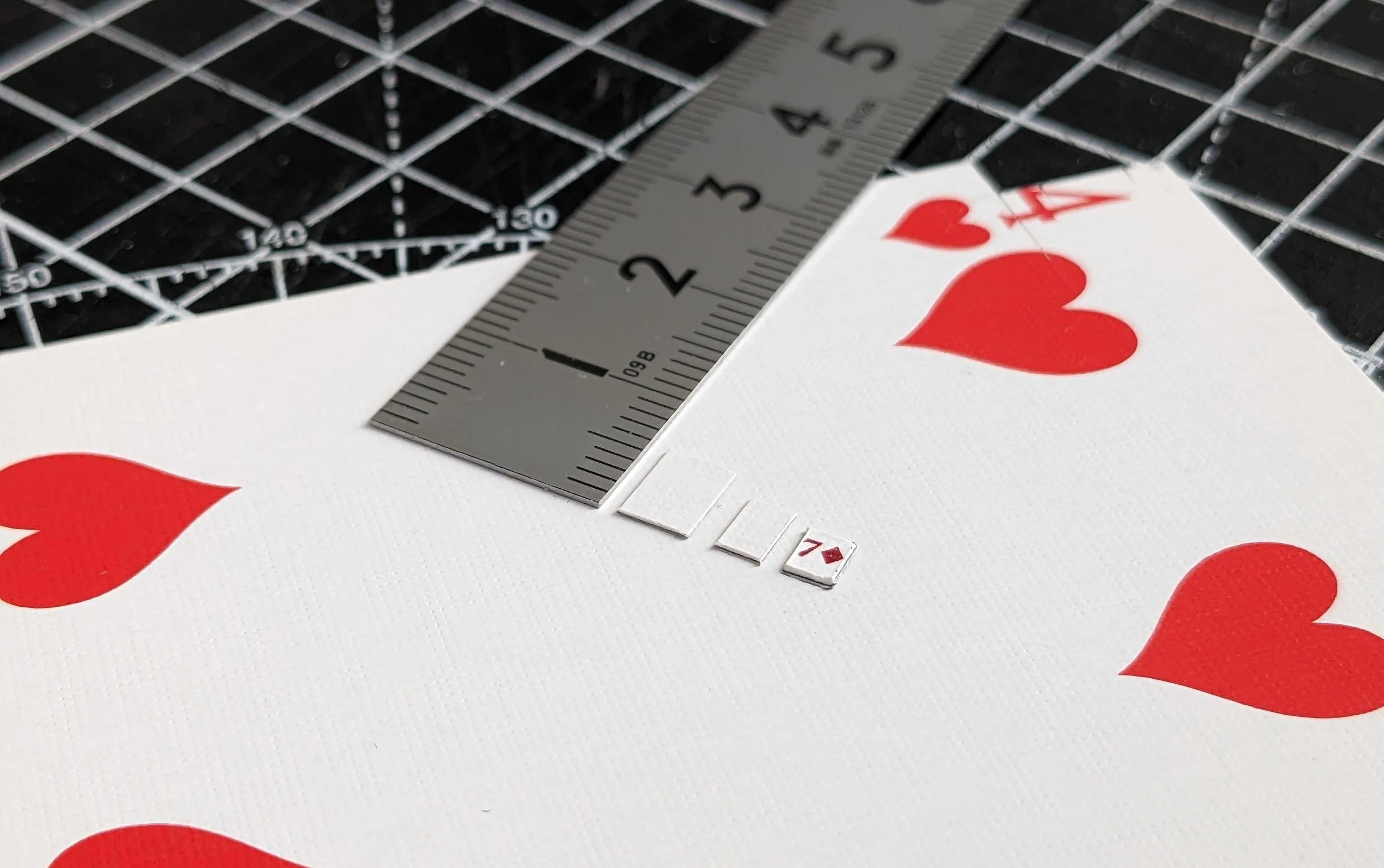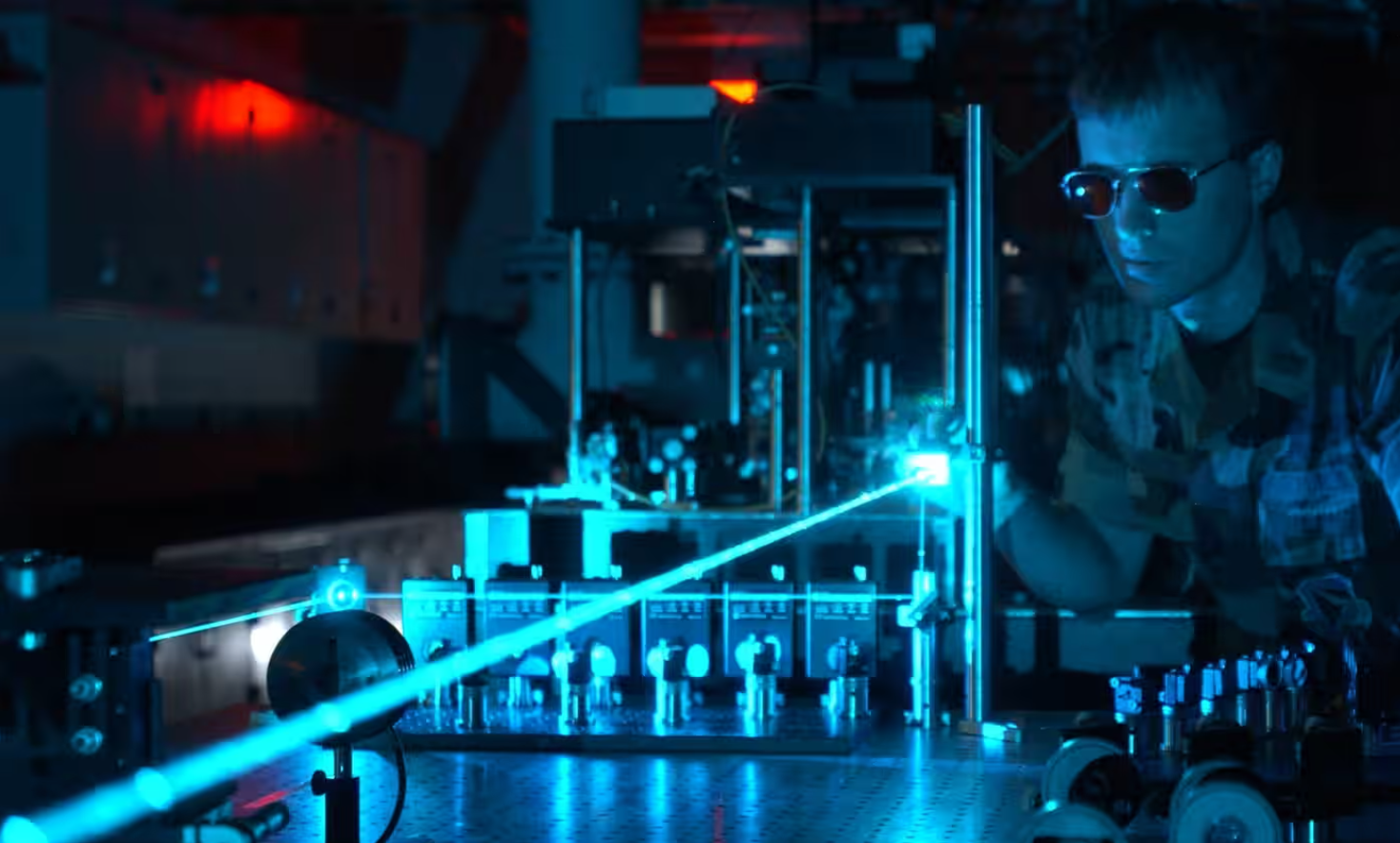Kickstarter live case study. Step 1: the beginning (& frickin’ lasers)
Last week I wrote about my plans to break a world record.
After some research and shortlisting of records I’ve chosen to attempt to make the smallest playing cards in the world.
I’ll share my progress with you each week and I think this will be an interesting little case study into how to take a concept all the way through to a shipped product.
Kickstarter will be a significant part of the process and I plan to have the whole project wrapped up in a couple of months.
Where to begin?
Ideas are the easy bit. It’s what you do with them that counts.
There’s a lot to think about in the very early stages. So much that it’s easy to get overwhelmed and an idea is at its most delicate at this point.
Breaking it down, here are my key considerations when kicking off a new product development project.
Is the product worth making and will people want it?
These are obviously massive questions, and this is a far bigger subject than I can cover right now, but it’s surprising how many people neglect to think them through properly.
I’ve combined the two separate parts into one question because if you want your project to be a commercial success you need to address the second part.
A key thing here is to talk to people about your idea. Start with friends and family, but even better if you can gauge the reaction from strangers
There’s nothing more deadly to a nascent idea than to hide away and keep it to yourself.
How will I pitch the idea?
You might think that the task of ‘selling’ your product comes at the end, but it’s really important to think about this early on.
Your mindset should be to make what you can sell, rather than try and sell what you can make.
How will I make it?
Depending on the type of product and the complexity of it, this question will be more or less easy to answer. You don’t need the exact answer at this point, but you need to know roughly where you’re heading.
Remember here to think about not just the core product, but anything else that may be relevant such as packaging.
How will I get it to customers?
Assuming I’m happy with my scrutiny of that first question above, I need to think about how I’ll find customers and get the product to them. Again, you don’t need the exact answer here, but this is worth thinking about early on.
In this particular case, the answer is simplified because I’m doing a Kickstarter campaign and limiting the run to 100 items that will only be available there. For other products I would consider ecommerce and other sales channels.
Answering my own questions
Is this product worth making? Will anyone care if I make the world’s smallest deck of playing cards?
To be honest, in a big way this is just a vanity project. Something I think will be fun and will give me a great sense of achievement.
I do however want other people to care about it, which is why I’m launching it on Kickstarter and will be asking people to pledge for pre-orders of the cards.
Based on showing people my early prototypes I think people will want to get their own tiny cards. The threshold here is also lower than with previous products I’ve launched on Kickstarter because I’m only offering a limited number of 100.
I also hope that some people may get value by me sharing my experiences here as they happen.
Just start
I love coming up with new ideas but often find that the hardest thing is to keep the momentum going and follow through with execution.
One great way I keep up early momentum is to create a draft Kickstarter page very early on in the project. It really helps me focus on the end goal and frame my thinking.
If you have an idea for a product, I’d really suggest you create a draft Kickstarter page right now and use it as a place to collate and structure your thoughts.
If in doubt, do something
As I’ve suggested, there are lots of questions and unknowns flying around when you first embark on a new product development project.
One trap is to overanalyse everything at the expense of actually doing anything.
Try and avoid this trap. Action trumps inaction.
One example with this tiny card project is that I very quickly made some low-res prototypes. I used my home printer to test some assumptions about printing size, and I cut up playing cards and other materials to get a feel for what I was up against.
The current record is 7x5 mm so I wanted to see what that looked like. And then what even smaller sizes would look like.
How small is small?One thing I quickly realised was that the thickness of the card stock would be important. It’s not necessarily an intuitive conclusion, but if I made tiny cards out of regular playing card stock, a pile of 52 cards would still be as high a regular deck of cards. I’d end up with a precarious mini skyscraper of cards.
I discovered that very quickly once I started experimenting with real materials.
This is only 13 cards. Too tall.As soon as I had my low-res prototypes I took some photos of them and started to think about how I would tell the story on my Kickstarter page. I even made a rough video trying out a concept I had for my pitch.
I won’t end up using those photos or that video but that’s not the point. The value is in the doing.
Seeing how my first prototypes look in photosNext steps
I’ve now finished most of the graphic design for these cards. I’ve taken classic playing card designs and reworked them to make them work better at a tiny size.
I’ve also been making sure I understand all the specific rules for this Guinness World Record attempt. For example my deck needs to be made up of 52 regularly-marked playing cards plus two jokers.
This week I’ll continue to flesh out my Kickstarter page and work on some better quality photography of my prototypes.
I also need to think more about how I’ll manufacture the cards. When I design and launch regular-size playing cards I have a list of trusted suppliers who will do all the work and deliver complete decks of cards in large quantities.
For this project, I’m doing something that, by definition, has never been done before, so there will be some challenges. The biggest unknown for me at the moment is how I’m going to cut the cards. Tomorrow I’ll be experimenting with lasers.
Frickin' lasers [Photograph: /Wikimedia commons Photograph: Wikimedia commons]…
I’ll let you know how I get on with that and share other progress next week.
If you don’t want to miss that, you can sign up to my newsletter here.
Also, if you’re looking for help with your own product development, please feel free to get in touch.




